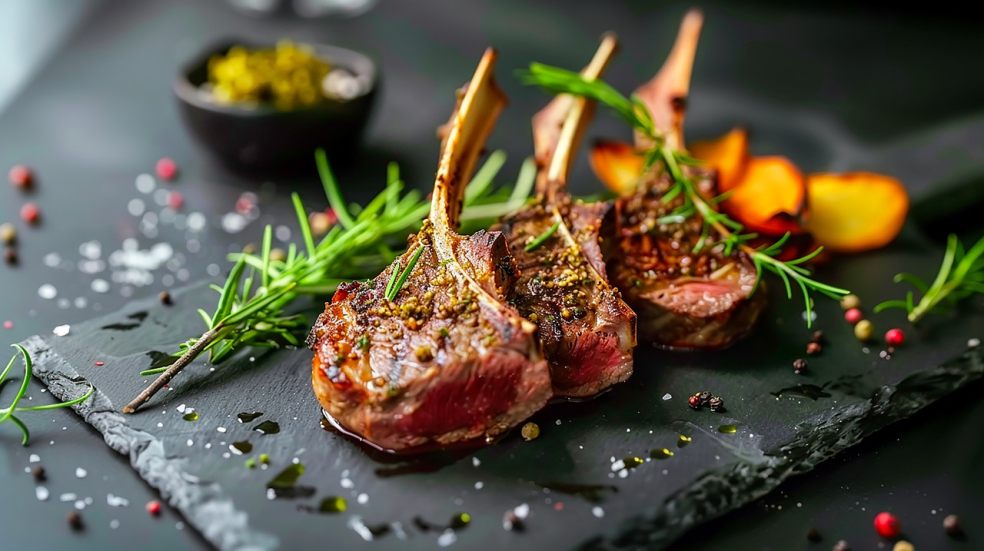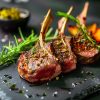
Mastering The Grill: Expert Tips for Cooking Different Meat Cuts
Grilling is an art that demands precision, especially when handling different cuts of meat. Understanding the nuances between beef, chicken, pork, and lamb ensures each piece is cooked to perfection. The key to mastering the grill lies in knowing the appropriate cooking techniques for each unique cut of meat.
Each type of meat requires a different approach. For instance, beef steaks benefit from high-heat searing to lock in juices, whereas poultry often demands a slower, more controlled grilling to ensure it cooks through safely. To achieve the best results, match your cooking method to the specific needs of the meat cut.
Balancing heat and timing is crucial. Thick cuts need a combination of direct and indirect heat to cook evenly without burning the exterior. Proper preparation, including marinating and seasoning, enhances the meat's natural flavours, making your grilled dishes truly stand out.
Choosing the Right Meat Cuts
Selecting the right meat cuts is essential for achieving the best results on the grill. Understanding the grades and variations in different meats like beef, poultry, and pork can significantly impact the flavour and texture of your dishes.
Beef: Understanding Grades and Cuts
Beef cuts vary widely in flavour, tenderness, and cooking methods. Look for Prime grade, which offers the most marbling and flavour but is often more expensive. Choice grade is a good balance of quality and cost, while Select grade is leaner and less tender.
Familiarise yourself with popular cuts like ribeye, sirloin, and tenderloin. You can purchases these cuts online here. Ribeye is known for its rich marbling and tenderness, making it ideal for grilling. Sirloin offers a good balance of flavour and leanness. Tenderloin is the most tender cut but less flavourful, often requiring marinades or sauces.
Understanding these variations helps in choosing beef cuts that align with your grilling preferences, whether you prioritise tenderness, flavour, or cost.
Poultry: Selecting Chicken and Turkey
When grilling poultry, selecting the appropriate cuts ensures juicy and flavourful results. Chicken breasts are popular for their leanness but can dry out quickly. Thighs and drumsticks are more forgiving, retaining moisture better due to higher fat content.
For turkey, opt for breast meat for a lean option, but be cautious of overcooking. Thighs and drumsticks offer more flavour and remain juicier on the grill.
Consider whether you want bone-in or boneless cuts. Bone-in poultry tends to be juicier and more flavourful but might require longer cooking times. Boneless cuts are more convenient but can dry out more easily if not monitored closely.
Pork: Recognising Prime Sections
Pork cuts are versatile and respond well to various grilling techniques. Pork loin, tenderloin, and ribs are prime choices. Pork loin is a larger cut that is tender if cooked properly, while tenderloin is the leanest and most tender part, ideal for quick grilling.
Ribs such as baby back or spare ribs require slow, indirect grilling for best results. Baby back ribs are smaller and more tender, while spare ribs are larger and have more flavour.
Consider the marbling when choosing pork cuts. More marbling means more flavour and tenderness, making your grilled dishes more enjoyable.
Essential Grilling Tools and Equipment
To achieve the best results while grilling, invest in high-quality tools and equipment. Here are some essentials:
Grill Types:
- Charcoal Grills: Offers a rich, smoky flavour.
- Gas Grills: Provides convenience with temperature control.
- Electric Grills: Ideal for small spaces and easy maintenance.
Basic Tools:
- Tongs: Long and sturdy for easy meat handling.
- Spatula: Wide and flat for flipping and moving food.
- Grill Brush: Essential for cleaning grates.
Thermometer: A reliable meat thermometer ensures your meat is cooked to perfection, avoiding undercooking or overcooking.
Fuel:
- Charcoal Briquettes or Lump Charcoal: Consistent heat for charcoal grills.
- Propane Tanks: For gas grills, providing quick and consistent heat.
- Electric Source: For electric grills, requiring only a power outlet.
Protective Gear:
- Heat-resistant Gloves: Protect your hands from burns.
- Apron: Keeps clothes clean and offers storage for small tools.
Additional Accessories:
- Basting Brush: For applying sauces and marinades.
- Grill Basket: Useful for grilling small or delicate items.
- Skewers: For kebabs and grilled vegetables.
Cleaning Supplies:
- Grill Scraper: Removes stubborn residues.
- Microfibre Cloths: For wiping down surfaces after cleaning.
Having the right grilling tools and equipment enhances your grilling experience and ensures delicious, perfectly cooked meals.
Preparation Techniques for Grilling
Proper preparation is essential when grilling different cuts of meat to ensure they are flavourful, tender, and cooked evenly. This section will cover marinating and seasoning, brining and tenderising, and portioning for even cooking.
Marinating and Seasoning
Marinating meat can infuse it with flavours and improve its tenderness. Use a mix of acidic components like lemon juice or vinegar, along with oil and various herbs and spices. Common herbs and spices include garlic, rosemary, thyme, and paprika.
For best results, marinate meat for at least a few hours, or even overnight in the fridge. Avoid using too much acid, as it can make the meat mushy. Seasoning with salt and pepper just before grilling can enhance the flavours further.
Brining and Tenderising
Brining involves soaking meat in a solution of water, salt, and sometimes sugar before cooking. This process helps retain moisture and enhances the meat's natural flavours. Brine for a few hours to overnight, depending on the size and type of meat.
Tenderising meat can be done using a meat mallet or tenderising tools. For tougher cuts, you can use a marinade with tenderising agents like yogurt or pineapple juice. These techniques help to break down protein fibres, resulting in a more tender texture.
Portioning for Even Cooking
Ensuring that meat cuts are of uniform size helps them cook evenly on the grill. Thicker cuts can be partially pre-cooked in the oven before grilling to avoid a burnt exterior and undercooked interior. Thin or delicate cuts like fish fillets can be grilled directly but should be closely monitored.
Using a meat thermometer can help achieve the desired doneness without overcooking smaller pieces. Additionally, using skewers can make managing smaller cuts easier and ensures they cook evenly. Prioritise even portioning to get the best results from your grilling efforts.
Grilling Methods and Temperatures
Mastering grilling involves understanding the various heat sources, managing temperatures, and utilising different equipment to enhance flavour and texture.
Direct vs Indirect Heat
When grilling, you can use direct or indirect heat. Direct heat is ideal for fast-cooking items like burgers, steaks, and sausages. The food is placed directly above the flames, achieving a quick sear and locking in juices.
Indirect heat, on the other hand, suits larger cuts such as roasts or whole chickens. This method involves placing the meat away from the flames, allowing it to cook slowly and evenly. Often, this requires a longer cooking time but results in tender and flavourful dishes.
Utilising both methods during a single grilling session can provide different textures and can enhance the overall taste of the meal.
Managing Grill Temperature
Controlling the temperature of your grill is crucial. Most grills come with built-in thermometers, but having an additional meat thermometer ensures accuracy. High heat (450°F-550°F) is apt for searing and quick cooking, while medium heat (350°F-450°F) is ideal for most grilling tasks.
For low and slow grilling, maintain a temperature between 225°F-275°F. Adjusting the vents allows you to regulate airflow and maintain consistent temperature. In gas grills, control knobs can be adjusted accordingly. For charcoal grills, add or reduce coals to manage heat levels.
Using Smokers and Wood Chips
Smokers introduce a rich, smoky flavour that is hard to achieve with regular grilling. They use indirect heat alongside wood chips or chunks. Different wood varieties, like hickory, applewood, or mesquite, impart unique flavours to the meat.
When using wood chips, soak them in water for about 30 minutes before adding them to the smoker or a foil packet placed on the grill. This ensures they smoulder rather than burn instantly, providing a steady smoke.
Smoking requires patience but results in deeply flavoured and tender meats, making the effort worthwhile.
By mastering these techniques, you can enhance your grilling skills and create memorable, delicious meals.
Safety and Hygiene Practices
Clean Your Grill:
Always start by cleaning your grill thoroughly. Old food remnants and grease can harbour harmful bacteria. Use a wire brush to remove any charred remains and wipe down surfaces with a damp cloth.
Separate Raw and Cooked Meats:
Never place cooked meats back on the same plate used for raw meats. This prevents cross-contamination. Use separate utensils and cutting boards for raw and cooked items.
Handwashing:
Wash your hands with soap and water before handling any food. Do this after touching raw meat and before touching other foods or surfaces.
Proper Storage:
Keep meats refrigerated until you are ready to grill. Avoid leaving meats out in the sun, as bacteria thrive in warm environments.
Cook to the Right Temperature:
|
Meat Type |
Internal Temperature (°C) |
|
Poultry |
75 |
|
Beef, Lamb, Pork |
63 (rest for 3 minutes) |
|
Ground meats |
71 |
|
Fish |
63 |
Tools and Utensils:
Regularly clean your grilling tools. Use a thermometer to check the internal temperature of meats, ensuring they are cooked thoroughly.
Thawing Meats Safely:
Thaw meats in the refrigerator, not on the counter. You can also use the microwave or cold water methods, but cook immediately after thawing if you use these options.
Avoid Flare-Ups:
Trim excess fat from meats to reduce flare-ups. They can burn the food and also lead to uneven cooking. Keep a spray bottle of water handy in case of flare-ups.














